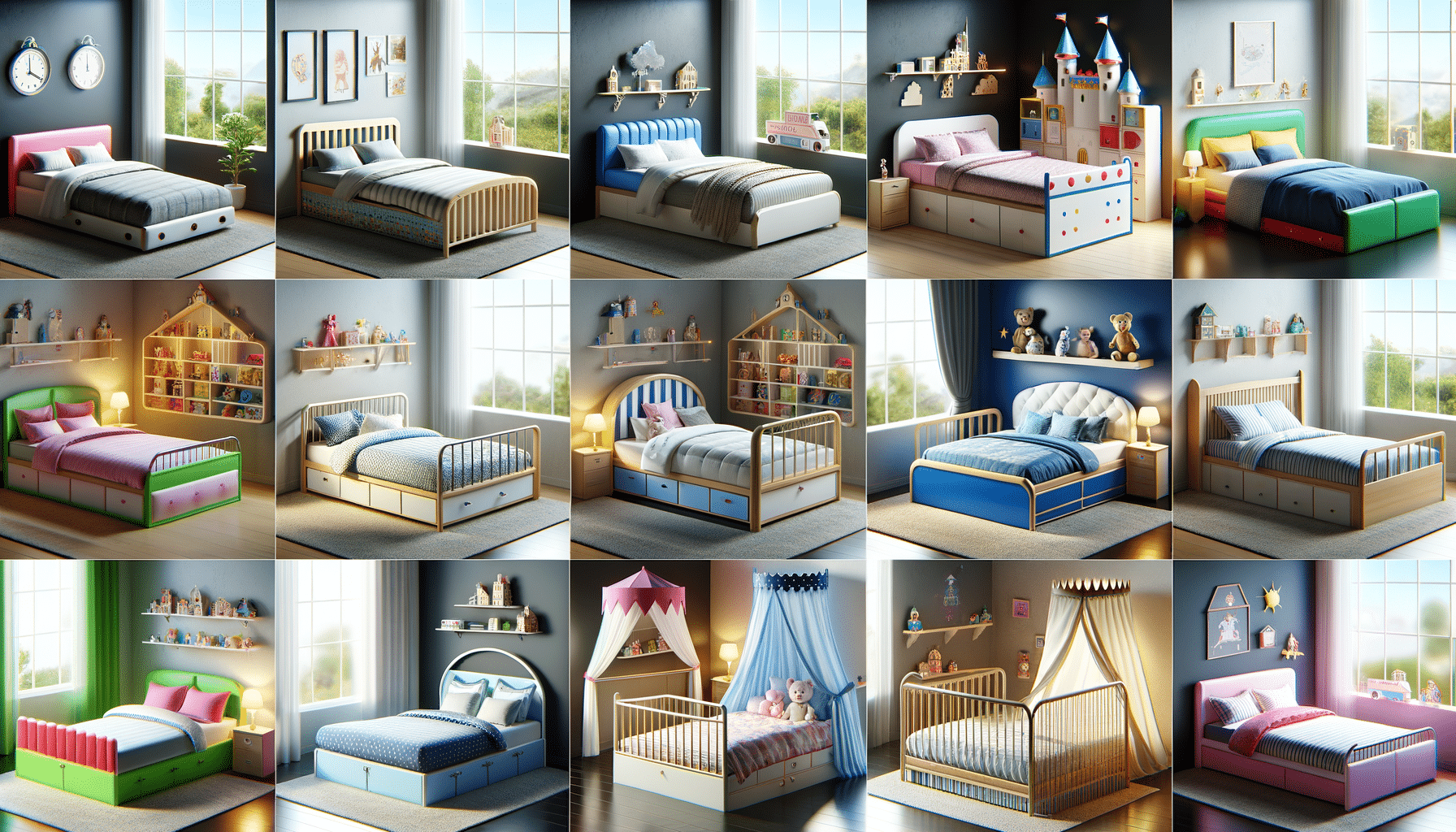Exploring the World of Kids Beds: Comfort, Safety, and Style
Kids beds are a crucial element in creating a nurturing and safe environment for children, combining comfort, safety, and style.

Importance of Choosing the Right Kids Bed
When it comes to designing a child’s bedroom, the bed is often the focal point. It’s not just a piece of furniture; it’s a sanctuary where children sleep, dream, and grow. Selecting the right bed is vital for ensuring a child’s comfort and safety, as well as contributing to their overall well-being. A well-chosen bed can provide the right support for growing bodies, promote healthy sleep patterns, and even encourage bedtime routines.
Parents should consider several factors when choosing a bed for their child. Safety is paramount, with features like guardrails and non-toxic materials being top priorities. Comfort is also crucial, as a good night’s sleep is essential for a child’s development. Additionally, the bed should reflect the child’s personality and preferences, making it a place they love to retreat to at the end of the day.
Furthermore, a well-designed kids bed can enhance the room’s aesthetics, making it a fun and inviting space. This balance of function and style can help foster a child’s independence and creativity, as they take pride in their personal space.
Types of Kids Beds: Exploring Options
The market offers a variety of kids beds, each catering to different needs and preferences. Understanding the options available can help parents make an informed decision.
Bunk beds are a popular choice for families with multiple children sharing a room. They save space and often come with creative designs that appeal to kids. Loft beds, on the other hand, are ideal for maximizing floor space, providing room for a desk or play area underneath.
For younger children, toddler beds offer a transition from a crib to a standard bed, featuring lower heights and guardrails for added safety. Twin beds are a versatile option, suitable for both young children and teenagers, often available in various themes and styles to match the child’s interests.
Trundle beds are another innovative choice, offering a pull-out bed for sleepovers or extra sleeping space. This feature makes them an excellent option for smaller rooms where space is at a premium.
Each type of bed has its benefits, and the choice largely depends on the child’s age, room size, and specific needs. Parents are encouraged to involve their children in the decision-making process, ensuring the chosen bed is one they will enjoy and feel comfortable in.
Safety Features to Consider
Safety is a primary concern when selecting a bed for children. Parents should look for beds that are sturdy and well-constructed, with no sharp edges or small parts that could pose a hazard. Guardrails are essential for bunk and loft beds, preventing falls during the night.
Another crucial safety feature is the use of non-toxic materials. Children are more sensitive to chemicals found in some paints and finishes, so opting for beds made from natural or certified non-toxic materials is advisable.
It’s also important to consider the mattress. A good mattress should provide adequate support for a child’s growing body, promoting healthy spinal alignment. Hypoallergenic materials can help reduce the risk of allergies, ensuring a healthier sleep environment.
Additionally, parents should regularly check the bed for any signs of wear and tear, ensuring all components are secure and in good condition. This proactive approach can prevent accidents and prolong the lifespan of the bed.
Balancing Style and Functionality
While safety and comfort are paramount, style should not be overlooked. A bed that reflects a child’s personality can make their room feel more personal and inviting. Many beds come in themed designs, from race cars to princess castles, sparking imagination and creativity.
Functionality is also a key consideration. Some beds offer built-in storage solutions, such as drawers or shelves, helping to keep the room tidy and organized. This is particularly beneficial in smaller spaces, where maximizing storage is crucial.
Parents can also consider customizable options, allowing them to update the bed as their child grows and their tastes change. This adaptability can make the investment in a quality bed more worthwhile in the long run.
Ultimately, the goal is to create a harmonious balance between style and functionality, ensuring the bed is both a practical and enjoyable part of the child’s bedroom.
Conclusion: Investing in a Quality Kids Bed
Choosing the right bed for a child is an important decision that can impact their comfort, safety, and overall happiness. By considering factors such as safety features, bed types, and style, parents can create a nurturing environment that supports their child’s development.
Investing in a quality bed is not just about providing a place to sleep; it’s about creating a space where a child can dream, play, and grow. With careful consideration and a focus on both function and aesthetics, parents can ensure their child’s bedroom is a safe and welcoming haven.
As children spend a significant portion of their time in their bedrooms, selecting a bed that meets their needs and preferences is a decision that can have lasting benefits, fostering a sense of security and comfort that supports their well-being.